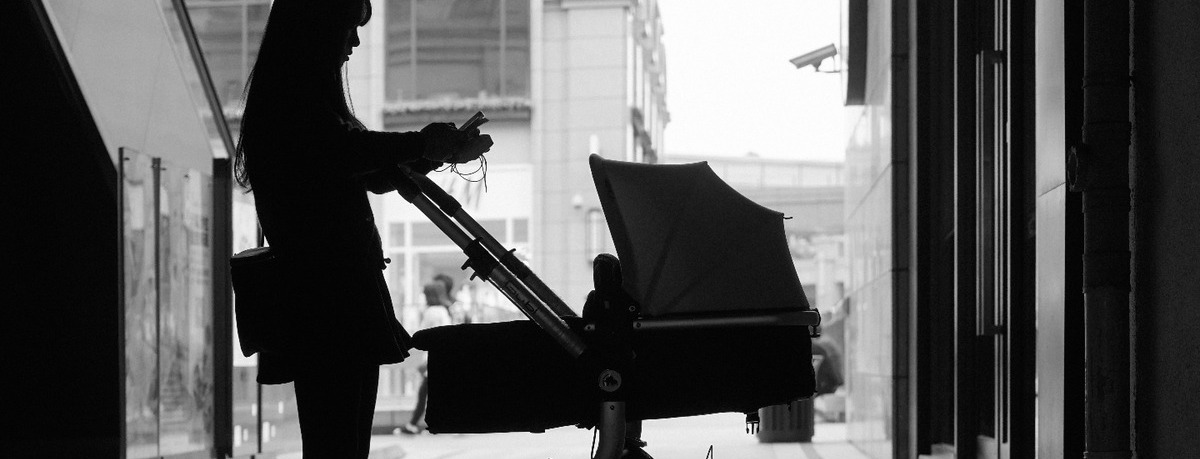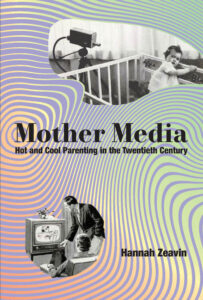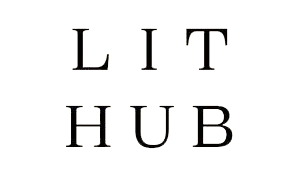
Nanny As Nuisance: How Caregivers Disrupt the Fiction of the Nuclear Family
Hannah Zeavin Explores the Class, Racial and Gender Dynamics of Childcare in the United States
Paid, one-to-one caregiving for children is far from the major story at any point in US history, especially for working mothers. In the nineteenth century (and to our present) there were a staggering number of arrangements for care that allowed mothers to work and have children simultaneously. As historian Sonya Michel writes, “At the end of the nineteenth century, then, American child care had come to consist of a range of formal and informal provisions that were generally associated with the poor, minorities, and immigrants and were stigmatized as charitable and custodial.”
Beyond arrangements of taking children to paid childcare centers—whether in department stores, one’s own apartment building, the back of a local house—or to family members, usually elders, or having siblings co-raise one another, mothers have long relied on technologies to keep a child with its mother but to assist in care, freeing maternal hands for other work, remunerated or not. Michel movingly assembles a litany of the forms of care available before twentieth-century hallmarks of child welfare reform:
Native Americans strapped newborns to cradle boards or carried them in woven slings; Colonial women placed small children in standing stools or go-gins to prevent them from falling into the fireplace. Pioneers on the Midwestern plains laid infants in wooden boxes fastened to the beams of their plows. Southern dirt farmers tethered their runabouts to pegs driven into the soil at the edge of their fields. Migrant laborers shaded infants in baby tents set in the midst of beet fields. Mothers have left children alone in cradles and cribs, and have locked them in tenement flats and cars parked in factory lots. Mothers have left babies dozing in carriages parked outside movie palaces.
When we now think about childcare, there is an implication that mother is dislocated from her child, that instead of the mother caring for the baby, a changing of hands occurs, and someone else comes in to do the work of helping the baby continue to live (if not thrive). Mediated childcare—whether by low-level or high technologies or using media as childcare to change aural and spatial limits—disrupts this assumption. Mother may be in the presence of her child, but with her attention directed elsewhere. As Michel deftly shows, there is a long history, in every class, in every US context, of using devices such that mother can labor and care at once.
It is a strange and particular twentieth-century fantasy that exclusive mothering is the primary and usual way care of children might proceed.
If low-level technologies have often been used for working-class and middle-class mother, the story of automating child-rearing is, centrally, one of expelling external, paid, and non-kin help (or “delegated care”) from the mother-child dyad while preserving that aid in a new form. Put another way, the story of automated child-rearing is inseparable from the disappearance of dispersed mothering among the wealthiest of mothers, those who, before the 1970s, were largely not working beyond the home. Maternal help and its remediation paradoxically indicate the limits of the primary maternal—itself the central fiction of the nuclear family—while consolidating the supposed purity of that limited position.
Across this period, how psychiatrists thought a mother should love was open to a series of revisions. Often against and within an increasingly mechanized domestic environment, a mother was told that she must love more “naturally”; her maternal labor must be more intensive and attentive, total and unflagging. The reliance on the nanny as a prosthetic extension or as a replacement altogether for maternal labor—and subsequently, the technologies that remediate the nanny—begot a logic of pure mothering, exclusive mothering, banishing even nonhuman agents to the background.
Elements of this dictum appeared for the working class as well, with the appearance of standardized daycare centers at the turn of the century, as well as the elaboration of the Children’s Welfare Bureau, which, in part, aimed to control mothers by providing economic provisioning for them, so that they could leave the workforce—and yet, at the start of the Great Depression, fewer than 1,200 centers for early childhood care—across a range of forms—existed in the entire country. These other forms of care mentioned above—intra- and inter-family care, waged care, and technology-assisted care—were largely the norm.
It is a strange and particular twentieth-century fantasy that exclusive mothering is the primary and usual way care of children might proceed. This fantasy, crucial to the ground upon which the mother-as-medium theory would appear, shaped the twentieth-century archives of the figure of the nurse and nanny, posing challenges to how we tell this history. The nanny is often pushed to the edge of the frame, just out of sight, spectrally present in the archive of daily life under capital and in the writings of psychiatrists charged with middle- and upper-class care in the twentieth century. This is one inflection of Anne Boyer’s blunt definition of care: “the suffering called gender named by capital as love.”
To neglect histories of paid caregiving in thinking about childcare is a grave error. We lose much parenting history when we do not think of maternal labor as multiform. Not only does it aid and abet maternal ideals that harm almost all—not just mothers—but it also makes it impossible to consider working mothers who care for children in addition to their own, from the plantation through domestic service to the nursery school. “Mother love” is readily mobilized in more sentimental accounts of historical mothering to obscure maternal labor.
A figuration in which love and work collapse, where reproductive and productive labors collide, the nanny posed challenges deemed too significant to the emergent theories, and thus as a figure she was disappeared; child psychologists refused to read this character and the formative scenes in which she was present. Labor historians and scholars of maternity have tended to follow suit. Filling the gaps, the pauses, and the silences of the literatures on domestic labor, on family life—all of which implicitly reify the sentimental importance of the mother (white, largely middle- and upper- class) over and against other mother figures or caregivers—we can bring the nanny into further view as embodying both the problematic of impression and contagion ascribed to mothers and the demand to stand in ascribed to media in the long twentieth century.
The etymology of nanny is as fascinating as it is unsettled: perhaps coming from terms for other proxy-mothers (aunt or granny), perhaps from early sounds infants make in babble. As we might use it now, the term “nanny” came into common usage in the aftermath of World War I in Anglo-America. Previously, this kind of carework was termed “nursing”; and what we now might call a nanny was a wet nurse, a nurse, or, for older children, a governess.
On the one hand, each of these designations might delimit the training and subsequent role of the employee in the home, especially when referral services took the model of the British domestic worker (where nannies were trained and graded on a scale well into the twentieth century). Referral services might conjugate the relationship between employer and employee (now this labor is sometimes ceded to platforms) based on a match between criteria and experience. On the other hand, while there were attempts to professionalize the labor of the nanny via accreditation and standardized training in the early twentieth century, with the exception of hospital programs, like that of the Babies Hospital in Newark, New Jersey, very few such programs established themselves.
In her different guises, the nanny also invariably lived in. The proxy-mother was always close to hand in the same home (if in very different parts of it) as the mother. In the twentieth century, she was distinct from ostensibly new and casualized counterparts: the mother’s helper or the babysitter. I use “nanny” to designate the regularized, non-kin, paid, twentieth-century worker called in to care for another’s children. “She” helps articulate shifts in carework. Through the era of her assumed employment, and as she gives way to nonhuman intermediaries, we can see how fantasies of progress belied regressive, nostalgic designs. As Lynn Spigel writes, “while technology advances [white] domestic ideals stay the same.” That ideal here is one in which proxies aid in maternal labor—whether human or nonhuman—while that necessary aid is selectively occluded.
If the nanny poses a particular problem for the bourgeois family, it is a problem that is suppressed, negotiated, yet constantly resurfaces. Whereas in the eighteenth century and prior, the fungibility of mother (as source of nurturance and care) was implicit in many child-rearing practices, in the nineteenth century, new anxieties about the nanny as site of contamination of the nuclear family and interference with that family’s culture came to prominence. While employing a nanny was far from a ubiquitous practice at any point in the twentieth century—the decision to hire a para-mother is deeply classed and raced—the prescriptive force of the upper classes moved beyond the boundary of their own homes. Although more often a figure rather than a pervasive reality in middle-class homes, upper-class panics about children, and the nanny employed to care for them, bleed beyond that classed zone of exception and even beyond the nanny—to the daycare and the school (as in the Satanic panic; more about this below). These panics were especially distilled and amplified beyond their own immediate contexts, on the one hand, among the aspirational and, on the other, in those subject to the policing of norms.
The trouble with the figure of the nanny has remained largely static. She is understood as coming from without but moves within, permeating the home with difference even if she lives full-time in the domicile that employs her. She also contains too great a similarity to mother. As nannies and nursemaids themselves testified in the interwar period, this alien quality ascribed to the nanny—that she comes from beyond the family and its “kind” to help maintain it—is precisely where the perceived trouble begins for her employers. While in upper-class homes, childcare is always distributed and might be carried across mother, nanny, and mediated occupation and care (in the form of children’s work, furniture, drugs, and disciplinary violence), here I turn to the particular anxieties attached to the nanny, a person paid to cross class lines in order to provide a form of labor in which waged task and maternal care necessarily blur.
The dependency on the extra-familial caregiver has been linked to extreme forms of violence against waged and enslaved care workers who did the work of mothering for children not their own, sometimes while caring for their own children. On the nineteenth-century plantation, as historian Stephanie E. Jones-Rogers shows, the enslaved wet nurse was purchased by white women to secure “the appropriation of their breast milk and the nutritive and maternal care they provided to white children. The demand among slave-owning women for enslaved wet nurses transformed the ability to suckle into a skilled form of labor, and created a largely invisible niche sector of the slave market that catered exclusively to white women.” Social, economic, racial, and ethnic difference between mother and nurse (and later nanny) were what made the outsourced care possible but also what elaborated it into a prime site for contamination panics.
On the nineteenth-century plantation and beyond it, breast milk specifically became suspect: Might being nursed imbue the child with the qualities of the body it turned to? This panic existed far beyond the antebellum South in this period and its precursors. As Jones-Rogers argues, “bodily fluids and a child’s ability to imbibe moral and racial essences through a woman’s breast milk…served as the basis for stern warnings to new mothers about putting their babies at the breasts of strange women.” “Mother as medium” can be traced all the way back to this understanding of maternal impressions; like a mother, a wet nurse would impress herself upon an infant as well, letting in what “should be” kept out. On this understanding the child is also supposed to be protected from foreignness at this level, not just protected by the family structure and walls of the home. Human milk becomes configured as a biological “intruder,” not just a medium of contamination.
Not only would wet-nursing in infancy “pass” qualities from the nurse to infant, but her whole person, her attitudes, and the contents of her very labor might be transfused as well. Middle-class parents continued to employ nurses and nannies for their children during Reconstruction, but what a nanny should be and who she should be became narrowly idealized just as fewer “acceptable” candidates (here coded as American-born white, middle-class, unwed women) for service positions were available.
This only intensified into the twentieth century when conceptions of breastfeeding recursively swung on a pendulum from the most important source of maternal care (a pure, private circuit between biological mother and child) to remediation by other new technologies, like formula, that met long-standing technology, like bottles. Depending on political conceptions of motherhood as they intertwined with scientific understandings of nutrition, formula could be seen as guaranteeing purity or, paradoxically, itself a site of contamination. (In our present, parents who share human milk, as in the most recent formula crisis of 2022, are also seen as suspect even as networks for sharing milk have a long history.)
Mother was the fit medium—so long as she could manage her children—and the nanny was the ill medium.
Beyond nursing, notions of contamination from childcare workers continued through the earliest years of the Progressive era. One set of worries centered on what the nurse might pass on to the child. Another orbited intently around what nursing might do to the mother-child relationship. As one parenting manual from this moment put it bluntly: “nurses and governesses intervene to cut off sympathy between mother and child.” As Lynn Weiner writes, there were also contentious social debates as the “[p]ublic discovery of the young working woman mirrored collective anxieties about changing gender roles, moral purity, the displacement of rural tradition by urban culture, and the fate of future generations.” The anxiety of future generations is a tell: the nanny might corrupt and corrode the bourgeois family such that, as it reproduces itself, its makeup mutates and degrades. Mother was the fit medium—so long as she could manage her children—and the nanny was the ill medium.
This purity/impurity dichotomy—or, in other terms, immediacy/mediacy—appears in all genres of parenting information in the Progressive era. First-wave feminists began to make the argument for delimiting white middle-class women’s work to mothering, relying on early automation (eliding human help rather than excluding paid care) to take care of other feminized social reproduction, or domestic labor in the home. Feminists from across the political spectrum have argued a version of this formulation since Catherine Beecher and Harriet Beecher Stowe’s 1869 work on domestic efficiency, The American Woman’s Home. Freed of cooking and cleaning, the Beecher sisters argue, women are better mothers and wives—and therefore need not seek paid help beyond the home.
The home, too, exists in an attention economy; remove the burden of some forms of duty, and greater satisfaction and human-to-human connection is possible so long as we allow our devices to automate other labor practices. Put another way, automating some tasks would allow a mother to provide not just presence, but undiluted attention to her child. The figure of the nurse interrupted that pure maternal attention and combined with panics about contagion. Seeking out new forms of aid that extricated the family from these problems, parents at the turn of the twentieth century turned to new technologies.
Scientific mothering consolidated this, furthering medical surveillance of mothers and the rigidity of feeding, bathing, and sleeping schedules. This rigidity, as we will see, comes on the heels of the second industrial revolution, and begins to conform the nonconforming rhythms of infancy to the timetables of waged work. At the same time, as these traditional mother’s helpers—human, disciplinary, and pharmacological—became suspect and guilt-inducing, innovation and automation offered themselves as emancipatory alternatives. Furniture and child architectures became sites of passive control and care.
As the historian of material culture Karin Calvert recognized, in this moment, “parents seemed to want more from a piece of furniture than simple containment. They were looking for something that would exercise and entertain their babies. Essentially, they sought a device that could replicate the attentions of the nurse.” If mother could be nearby (providing presence) and the furniture itself could provide attention, together they could cut out the additional, “intrusive” caregiver who was, in most cases, the primary caregiver. In this scene, mother would be released to do the rest of the work allotted to her. This revolution in childcare furnishings—taking the long-standing cradle and adding new affordances to it—accounts for most of the objects still routinely in use today: the playpen (containment and entertainment), the high chair (containment and nourishment), and the cradle’s replacement by crib.
For white middle- and upper-class mothers at the turn of the last century, bringing another human influence into contact with their child was full of xenophobic, raced, and classed anxiety about extra-maternal impression—from the kinds of stories a nanny might tell to the kinds of facial expressions she might make. The mother was then offered—by industry, by women’s magazines, by pediatric advice—an alternative. She could be mother, nursemaid, and sentinel at once to circumvent this supposedly dangerous influence—to keep the mother-medium free of the nanny-medium.
Other humans were not the only solution to caring for children that had recently come under suspicion: corporal punishment, opiates, and alcohol had all fallen out of favor by the turn of the century. They too were understood to be instructive or disciplining or pacifying—to help with the labor of raising children—but each met basic criticism for their side effects. If the nanny could transmit her home environment (first in milk and later merely via presence), and other tools were understood to be improper, then the white middle- or upper-class mother would have to constitute the entire alternative, the necessary assemblage. She was to be an environment unto herself.
__________________________________

From Mother Media: Hot and Cool Parenting in the Twentieth Century by Hannah Zeavin. Copyright © 2025. Available from MIT Press.
Hannah Zeavin
Hannah Zeavin is Assistant Professor of the History of Science in the Department of History and the Berkeley Center for New Media at UC Berkeley. She is the author of The Distance Cure (MIT Press) and Founding Editor of Parapraxis. In 2021, she cofounded The Psychosocial Foundation.












